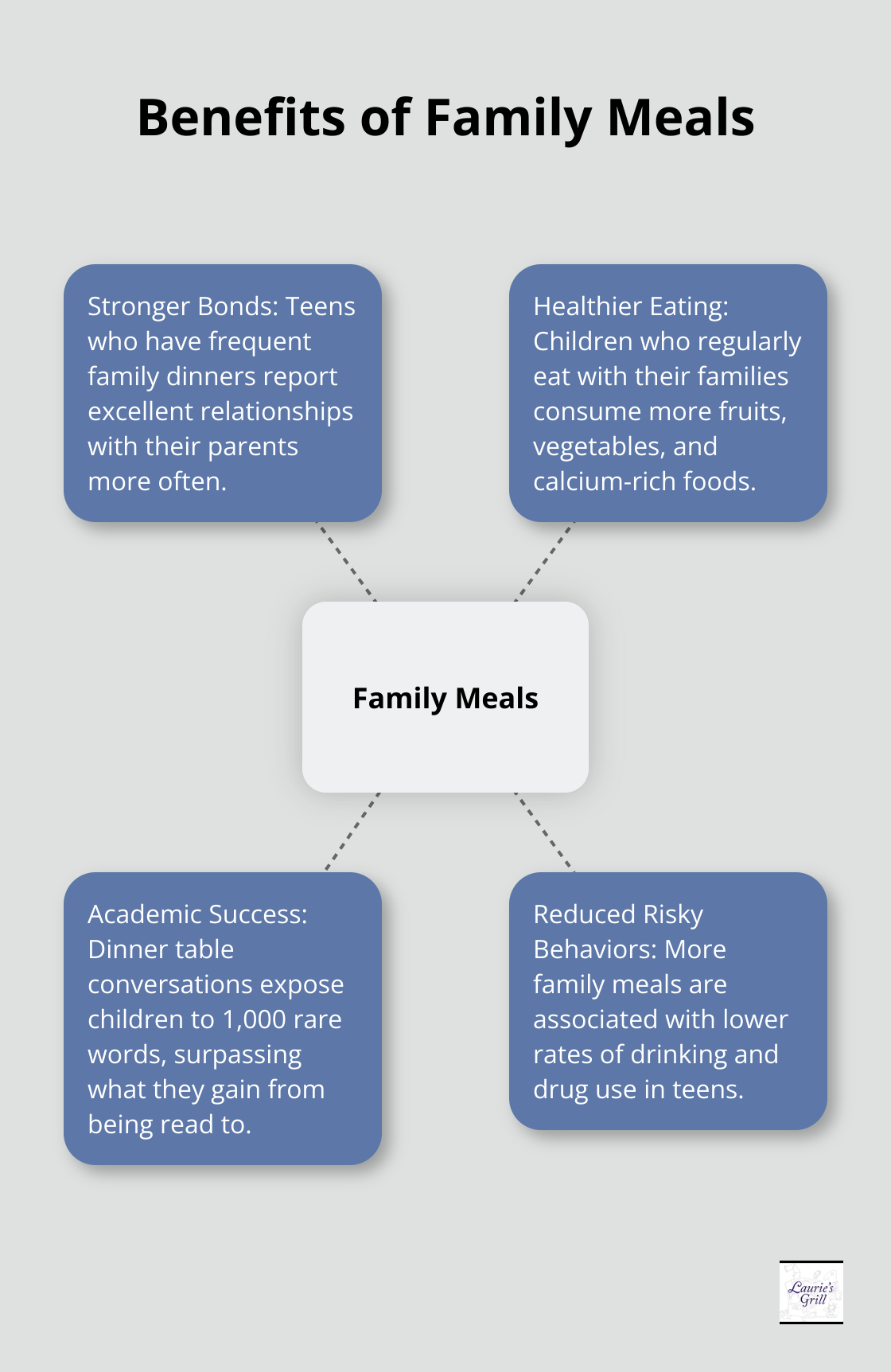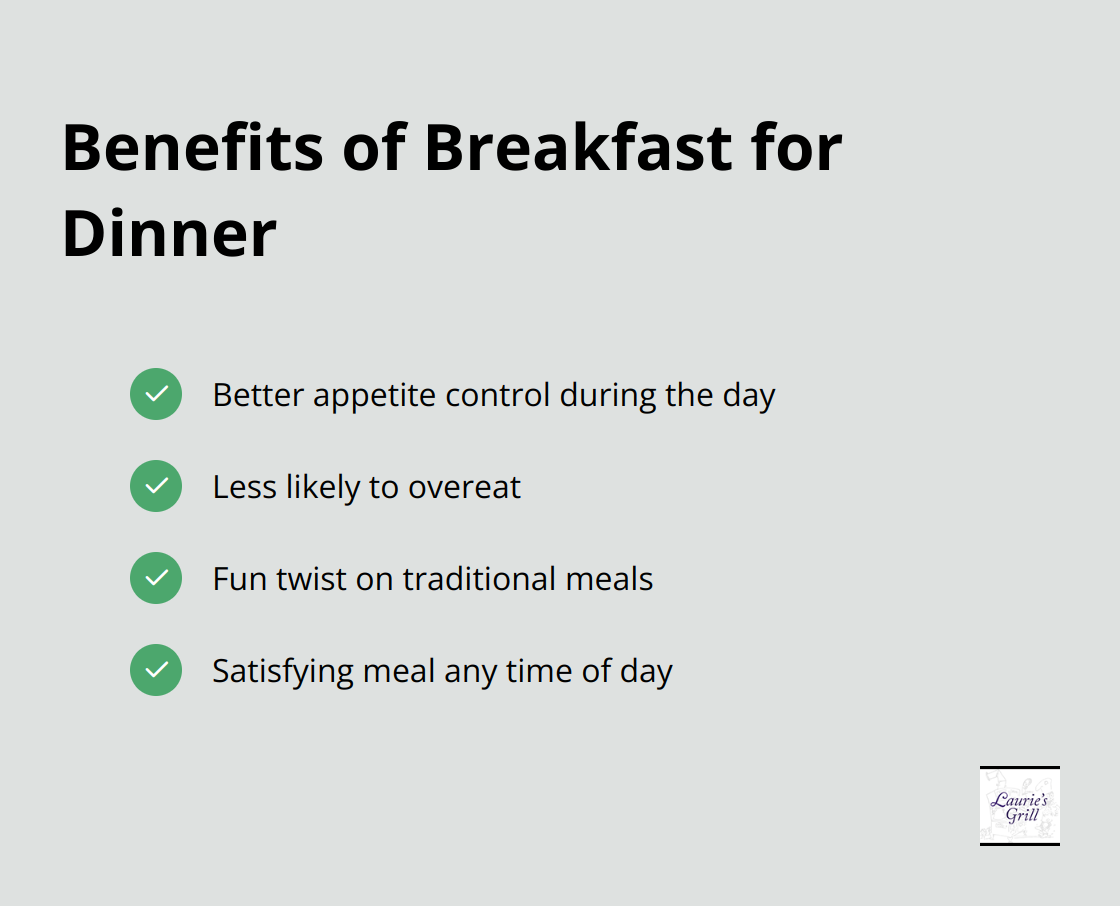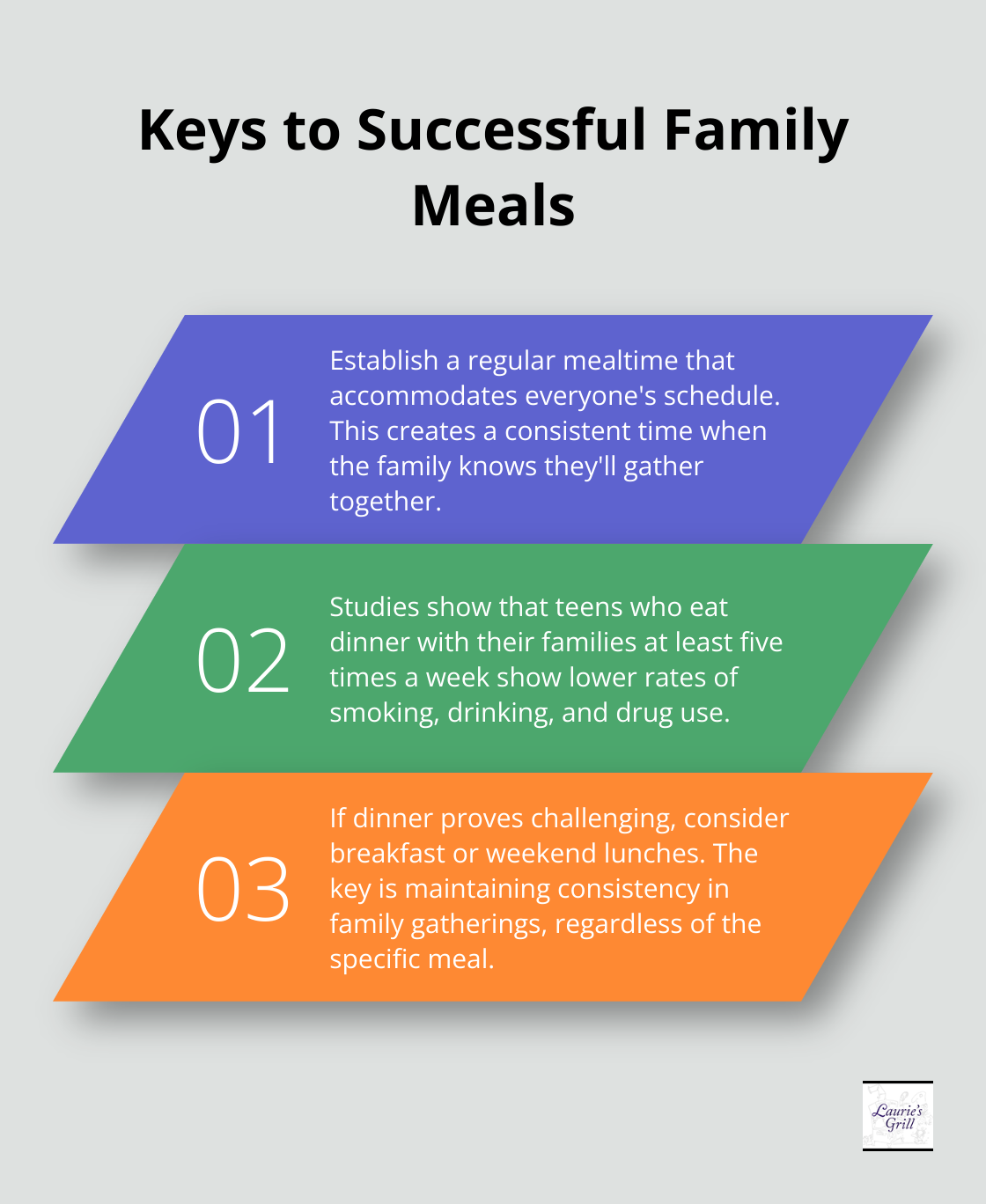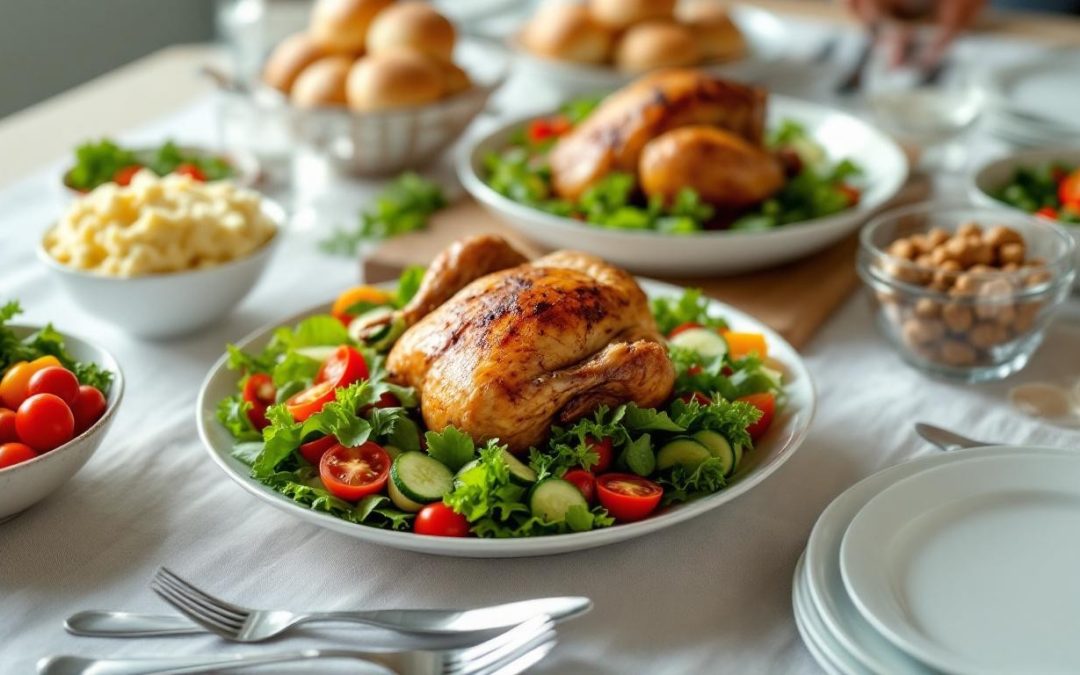Family meals are more than just a chance to eat together. They’re a powerful way to strengthen bonds, improve health, and boost children’s development.
At Laurie’s Grill, we know that good family meals can transform relationships and create lasting memories. In this post, we’ll explore the benefits of family dinners and share practical ideas to make them a regular part of your routine.
Why Family Meals Matter
Family meals form the foundation of strong, healthy households. They nourish relationships and foster growth, not just fill stomachs. Let’s explore why family dinners should become a priority in every home.

Building Stronger Bonds
Eating together creates a daily ritual for connection. It provides a time for families to share experiences, challenges, and triumphs. A study by the National Center on Addiction and Substance Abuse at Columbia University found that teens who have frequent family dinners report excellent relationships with their parents more often. This translates to better communication and a stronger support system within the family unit.
Healthier Eating Habits
Families who eat together tend to make healthier food choices. Research published in the Journal of Nutrition Education and Behavior shows that children who regularly eat with their families consume more fruits, vegetables, and calcium-rich foods. They also face a lower risk of developing unhealthy eating habits or struggling with obesity later in life.
Boosting Academic Success
Family meals can significantly impact children’s academic performance. A study from the Harvard Graduate School of Education found that dinner table conversations expose children to 1,000 rare words (words not found among the most common in the English language). This exposure surpasses what children gain from being read to, contributing to a larger vocabulary and improved reading skills.
Reducing Risky Behaviors
Family dinners are linked to less risky behavior in teens. A study found that more meals are associated with lower rates of drinking and drug use. Consistent family meals create a space for open dialogue, allowing parents to stay informed about their children’s lives and provide guidance when needed.
Making It Happen
Family meals don’t require elaborate preparations. Even simple, quick dinners can yield these benefits when shared together. Try to establish a regular mealtime schedule that works for your family (this might mean breakfast or lunch instead of dinner on some days). Involve everyone in meal planning and preparation to increase engagement and make the process more enjoyable.
Now that we understand the importance of family meals, let’s explore some easy and delicious meal ideas that will bring everyone to the table.
Family-Friendly Meals Made Easy
Creating delicious family meals doesn’t require complexity or excessive time. We’ve compiled practical ideas to make family dinners both enjoyable and manageable, even with busy schedules.
One-Pot Wonders
One-pot meals simplify weeknight cooking. They reduce cleanup and enhance flavor. A popular choice is hearty chili. Brown ground beef, add beans, tomatoes, and spices, then simmer. Serve with cornbread for a complete meal.
Another excellent one-pot option is creamy chicken and rice casserole. Combine uncooked rice with cream of mushroom soup, chicken broth, and seasoning. Place chicken breasts on top and bake for about an hour. This no-fuss meal feeds the whole family with minimal effort.
Breakfast for Dinner
Breakfast isn’t limited to mornings. “Brinner” (breakfast for dinner) offers a fun twist on traditional meals. Pancakes, waffles, or French toast paired with scrambled eggs and bacon create a satisfying meal any time of day. Research has found that people who eat big morning meals have better appetite control during the day and are less likely to overeat.

For a healthier alternative, consider a veggie-packed frittata. Beat eggs with milk, pour over sautéed vegetables in an oven-safe skillet, add cheese, and finish in the oven. This meal uses leftover vegetables and provides protein-rich nutrition.
DIY Dinner Nights
Make-your-own meal nights encourage kids to try new foods while having fun. Taco bars always please crowds. Offer tortillas, seasoned meat, beans, cheese, lettuce, tomatoes, and various salsas (mild to spicy). Let everyone construct their perfect taco.
Pizza nights present another great option. Pre-bake pizza crusts, provide sauce, cheese, and various toppings, then allow everyone to create their own masterpiece. This approach involves the whole family in meal preparation.
These easy ideas can transform family dinners into regular, stress-free occurrences in your household. The next section will explore tips to make these family meals even more successful and meaningful.
How to Make Family Meals Unforgettable
Family meals transcend mere sustenance; they create an environment where everyone feels valued, heard, and connected. Here are some proven strategies to elevate your family dinners from ordinary to extraordinary.
Establish a Consistent Schedule
Set a regular mealtime that accommodates everyone’s schedule. A study by the National Center on Addiction and Substance Abuse revealed that teens who eat dinner with their families at least five times a week show lower rates of smoking, drinking, and drug use. However, recent research suggests that the benefits of family dinners may be more complex and dependent on the quality of parent-child relationships. If dinner proves challenging, consider breakfast or weekend lunches. The key lies in maintaining a consistent time when the family knows they’ll gather together.

Encourage Family Participation
Transform meal preparation into a family activity. Assign tasks based on age and ability. Young children can set the table or wash vegetables, while older ones can assist with cooking. This involvement not only imparts valuable life skills but also builds excitement for the meal (and creates lasting memories).
Cultivate a Welcoming Atmosphere
The dining environment significantly impacts the meal experience. Try these simple tricks: dim the lights, play soft background music, or light candles to create a cozy ambiance. Use real plates and utensils instead of disposables to elevate the occasion.
Eliminate Distractions
Implement a tech-free zone during mealtimes. Put away phones, turn off the TV, and focus on each other. This undivided attention fosters deeper connections and more meaningful conversations (a win-win for everyone).
Initiate Engaging Conversations
Use mealtime to truly connect with one another. Ask open-ended questions that prompt more than yes or no answers. For example, “What was the highlight of your day?” or “If you could travel anywhere, where would you go and why?”
Final Thoughts
Good family meals strengthen bonds, improve health, and boost children’s development. These shared moments create lasting memories and foster better communication within families. Simple meal ideas and strategies can transform everyday dinners into meaningful gatherings, regardless of busy schedules.
Family dining doesn’t always require home cooking. Sometimes, it’s nice to enjoy a meal out together. Laurie’s Grill offers a warm atmosphere and a menu of home-style classics perfect for family meals. Our all-day breakfast, hearty burgers, and sandwiches cater to various tastes.
Family meals are a powerful tool for building stronger, healthier, and happier families. The benefits extend far beyond the dinner table, impacting academic performance and reducing risky behaviors. Prioritize these shared moments (at home or at a family-friendly restaurant) to invest in your family’s well-being and create a tradition that will benefit future generations.


Recent Comments